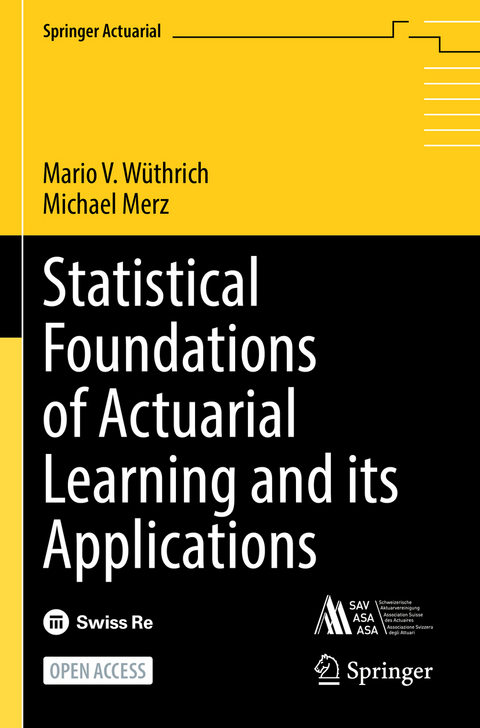
Statistical Foundations of Actuarial Learning and its Applications
Springer International Publishing (Verlag)
978-3-031-12411-2 (ISBN)
Statistical modeling has a wide range of applications, and, depending on the application, the theoretical aspects may be weighted differently: here the main focus is on prediction rather than explanation. Starting with a presentation of state-of-the-art actuarial models, such as generalized linear models, the book then dives into modern machine learning tools such as neural networks and text recognition to improve predictive modeling with complex features.
Providing practitioners with detailed guidance on how to apply machine learning methods to real-world data sets, and how to interpret the results without losing sight of the mathematical assumptions on which these methods are based, the book can serve as a modern basis for an actuarial education syllabus.
Mario Wuthrich is Professor in the Department of Mathematics at ETH Zurich, Honorary Visiting Professor at City, University of London (2011-2022), Honorary Professor at University College London (2013-2019), and Adjunct Professor at University of Bologna (2014-2016). He holds a Ph.D. in Mathematics from ETH Zurich (1999). From 2000 to 2005, he held an actuarial position at Winterthur Insurance, Switzerland. He is Actuary SAA (2004), served on the board of the Swiss Association of Actuaries (2006-2018), and is Editor-in-Chief of ASTIN Bulletin (since 2018). Michael Merz has been the holder of the Chair of Mathematics and Statistics in Economics at the University of Hamburg since 2009. After completing his doctorate at the University of Tubingen on a topic from the field of risk theory, he worked from 2004 to 2006 in the actuarial department of Baloise Insurance Group and gained practical experience in the areas of quantitative risk management and Actuarial Science. He then worked until 2009 as a Juniorprofessor for statistics, risk and insurance at the University of Tubingen. Since the beginning of 2018 he is editor of ASTIN Bulletin.
- 1. Introduction. - 2. Exponential Dispersion Family. - 3. Estimation Theory. - 4. Predictive Modeling and Forecast Evaluation. - 5. Generalized Linear Models. - 6. Bayesian Methods, Regularization and Expectation-Maximization. - 7. Deep Learning. - 8. Recurrent Neural Networks. - 9. Convolutional Neural Networks. - 10. Natural Language Processing. - 11. Selected Topics in Deep Learning. - 12. Appendix A: Technical Results on Networks. - 13. Appendix B: Data and Examples.
| Erscheinungsdatum | 24.11.2022 |
|---|---|
| Reihe/Serie | Springer Actuarial |
| Zusatzinfo | XII, 605 p. 1 illus. |
| Verlagsort | Cham |
| Sprache | englisch |
| Maße | 155 x 235 mm |
| Gewicht | 937 g |
| Themenwelt | Informatik ► Theorie / Studium ► Künstliche Intelligenz / Robotik |
| Mathematik / Informatik ► Mathematik ► Angewandte Mathematik | |
| Mathematik / Informatik ► Mathematik ► Statistik | |
| Schlagworte | actuarial modeling • Artificial Neural Networks • Deep learning • open access • Pricing and Claims Reserving • Regression modeling |
| ISBN-10 | 3-031-12411-1 / 3031124111 |
| ISBN-13 | 978-3-031-12411-2 / 9783031124112 |
| Zustand | Neuware |
| Informationen gemäß Produktsicherheitsverordnung (GPSR) | |
| Haben Sie eine Frage zum Produkt? |
aus dem Bereich


